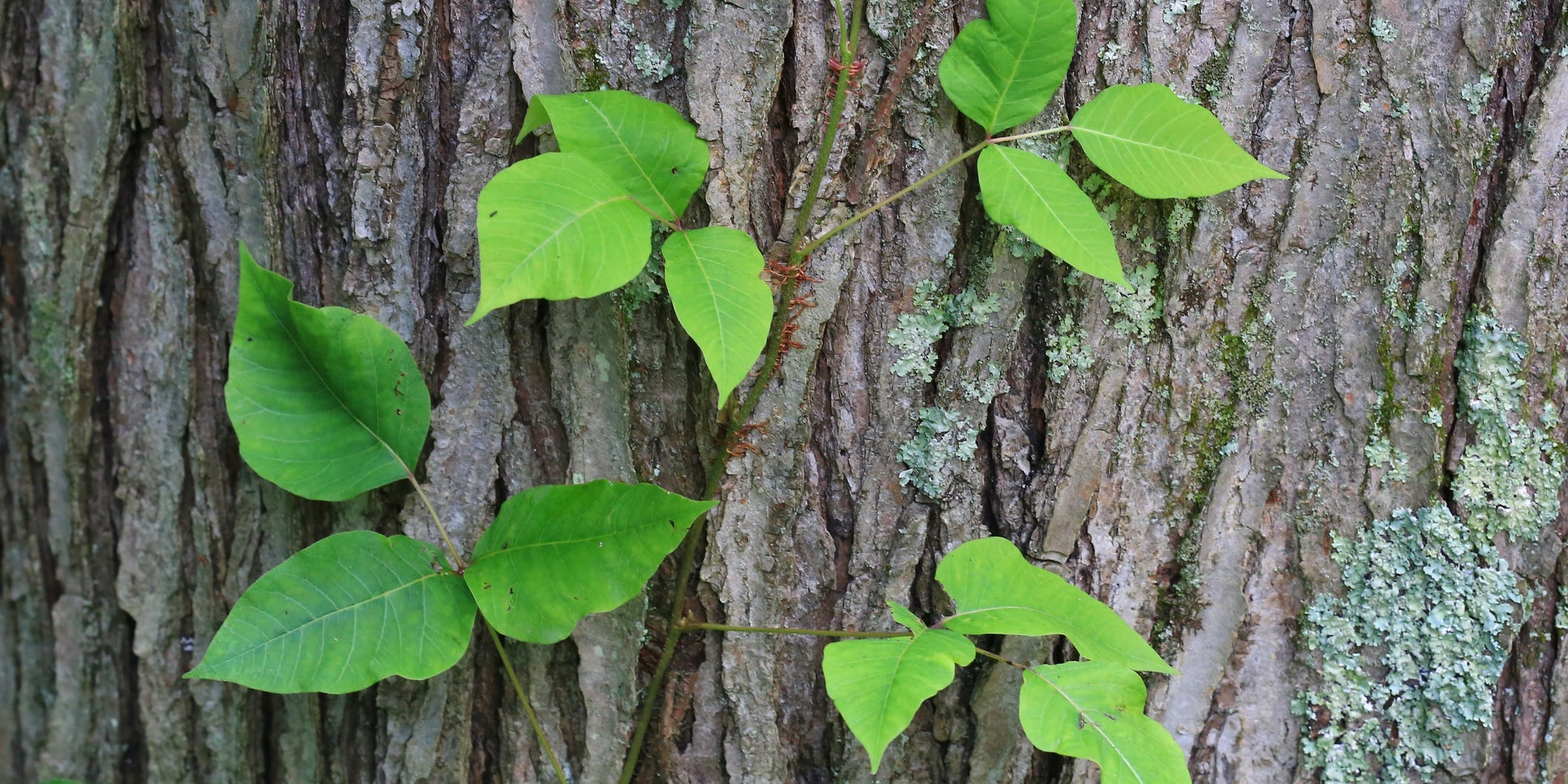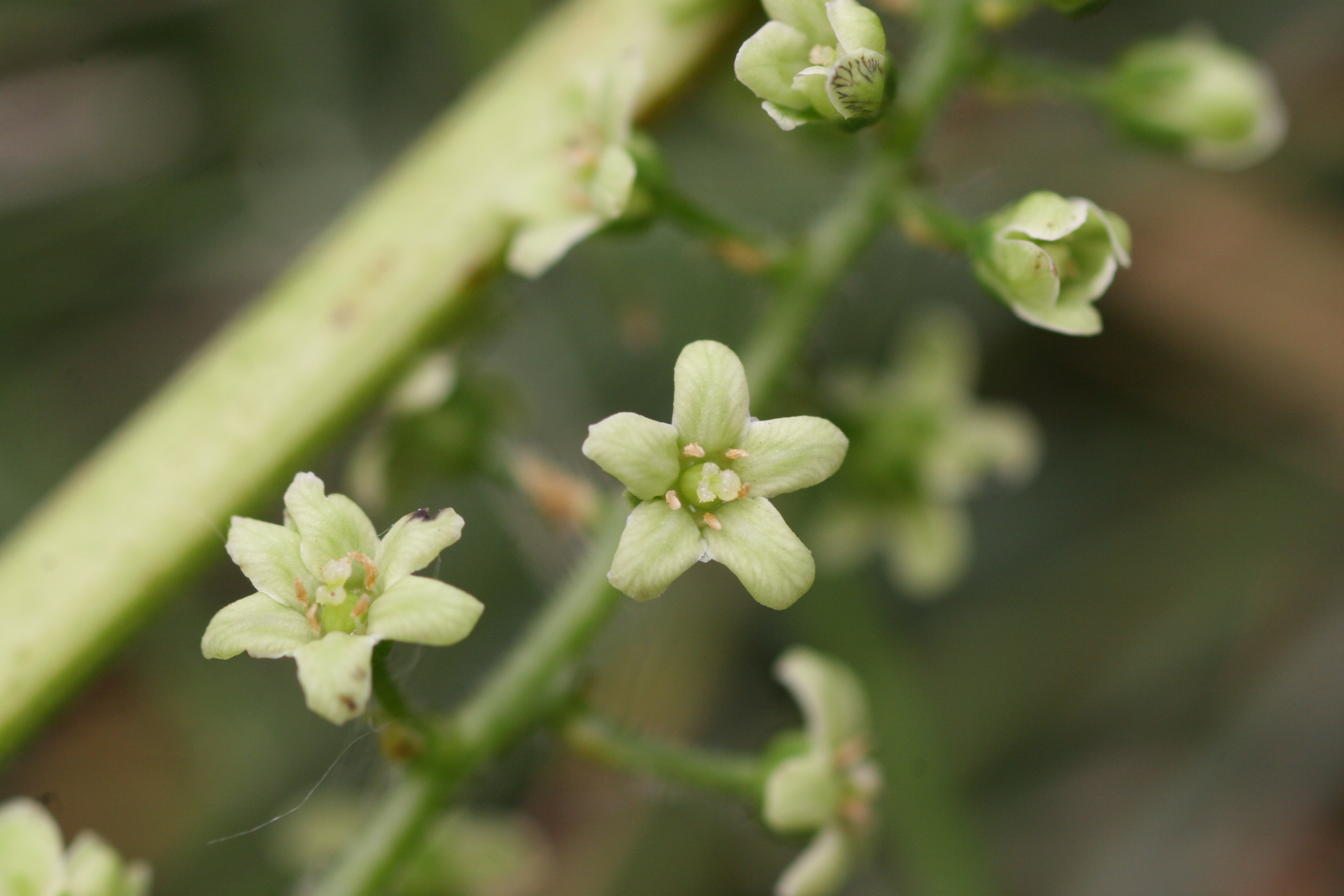

Poison ivy can be removed by either mechanical means– such as repeated mowing or pulled with gloved hands– or with certain herbicides applied to freshly cut stumps.

The bark is dark gray and densely covered in aerial roots. Poison ivy leaves are shiny, bright green and turn an attractive red or reddish yellow in the fall. It’s hard to describe poison ivy leaflets because their shape and size vary from smooth, rounded edges to serrated edges to shallowly lobed edges, but its leaflets are always in groups of three. The middle leaflet is longer than the outer two. Poison ivy leaves are compound leaflets in groups of three, a trait that can reliably distinguish it from a number of similar native vines. Due to its wildlife benefits, it can be left alone in areas with low human activity. A variety of insects feed on the flowers of poison ivy too – from beetles to flies, bees, wasps, ants, and butterflies.


Birds, reptiles, deer, and amphibians can eat the plant and its berries and also use the plant as shelter. When it grows as a woody shrub, it can reach lengths of 6 feet when it grows as a vine, it can reach 60 to 150 feet tall and climb high on trees, walls, and fences or trail along the ground. Infection can occur from direct contact with the plant, indirect contact (e.g., dog, rake or shoes) or from breathing smoke from a fire of plant material. All parts of the plant contain a toxic oil called urushiol that causes significant and long-lasting skin irritations (allergic dermatitis) in most human beings. It can appear as a bushy, erect or trailing shrub in sunny areas or as a woody climbing vine. Poison Ivy is native throughout the United States and much of southern Canada and can be found in a wide variety of locations including dry or wet woodlands, thickets, valleys, clearings, fence rows, roadsides and waste ground. As the saying goes, “Leaflets three, let it be.” Toxicodendron radicans, or Poison Ivy, is the ultimate weed that no one wants. See below This plant is an invasive species in North Carolina Description Phonetic Spelling toks-ee-ko-DEN-dron RAD-ee-kans This plant has high severity poison characteristics.


 0 kommentar(er)
0 kommentar(er)
